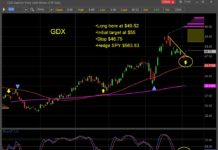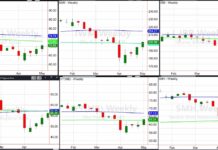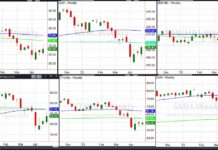“What if I am wrong?” This is one of the most important questions that an investor needs to regularly ask themselves.
That’s how my commentary last week started, and based on the 3.19% surge in the S&P 500; the 3.94% gain in the NASDAQ and the 4.89% explosion in the Russell 2000 I have to admit that, for the week, I was wrong. The S&P 500 set a new all-time high while the NASDAQ and the Russell 2000 indexes still have not surpassed the highs they set back on March 3rd, 2000.
So what caused this incredible market euphoria? Did the economy suddenly turn around and show evidence of surging ahead? No. We did get the third quarter GDP report that came out better than expected. The huge move on Friday, though, came as a result of the Bank of Japan announcing further quantitative easing. In other words, for over twenty years Japan has been burning it’s currency in an effort to stimulate economic growth and it hasn’t worked. BUT THIS TIME IT’S DIFFERENT.
China is slowing down. India is slowing down. Australia is slowing down. Europe is in recession. Canada is slowing down and so is the United States. All around the world, nations are continuing lock-step in following policies that aren’t working (i.e. quantitative easing).
And the S&P 500 hits an all-time high.
So where do we go from here? I continue to follow my process and the process continues to indicate (at the Global Macro level) that, quantitatively there is significantly more downside risk than upside potential in the equity indexes. These are the same types of imbalances that occurred in March of 2000 and November of 2007. The technically-oriented, multi-factor intermediate term (3 weeks to 3 months) trending indicators that I use continue to signal the market is in a down trend, although the recent surge over the last two weeks means that those indicators may reverse as soon as tomorrow depending on how the markets do today.
IF that happens, then I will be moving money from cash back into equities according to the algorithms associated with the trading systems I have selected for these markets. The amount of money for each of my clients that gets moved back into the market is dependent on my overall event-based allocation percentages (the percent allocated to stocks, bonds, real estate and cash). The current allocation is based on the larger macro datapoints so it is decidedly less aggressive than it was 6 months ago.
Jeff’s Trending Indicators
US Stock Market Trending Down
Canadian Stk Mkt Trending Down
US Bond Yields Yield’s Trending Down
Watch a short video on my event-based portfolio management and how it differs from the way traditional firms allocation portfolios.
In the end, nothing has really changed in what I am doing. I continue to follow the process as opposed to reacting based on fear or greed. Have a great week.
Any opinions expressed herein are solely those of the author, and do not in any way represent the views or opinions of any other person or entity.








